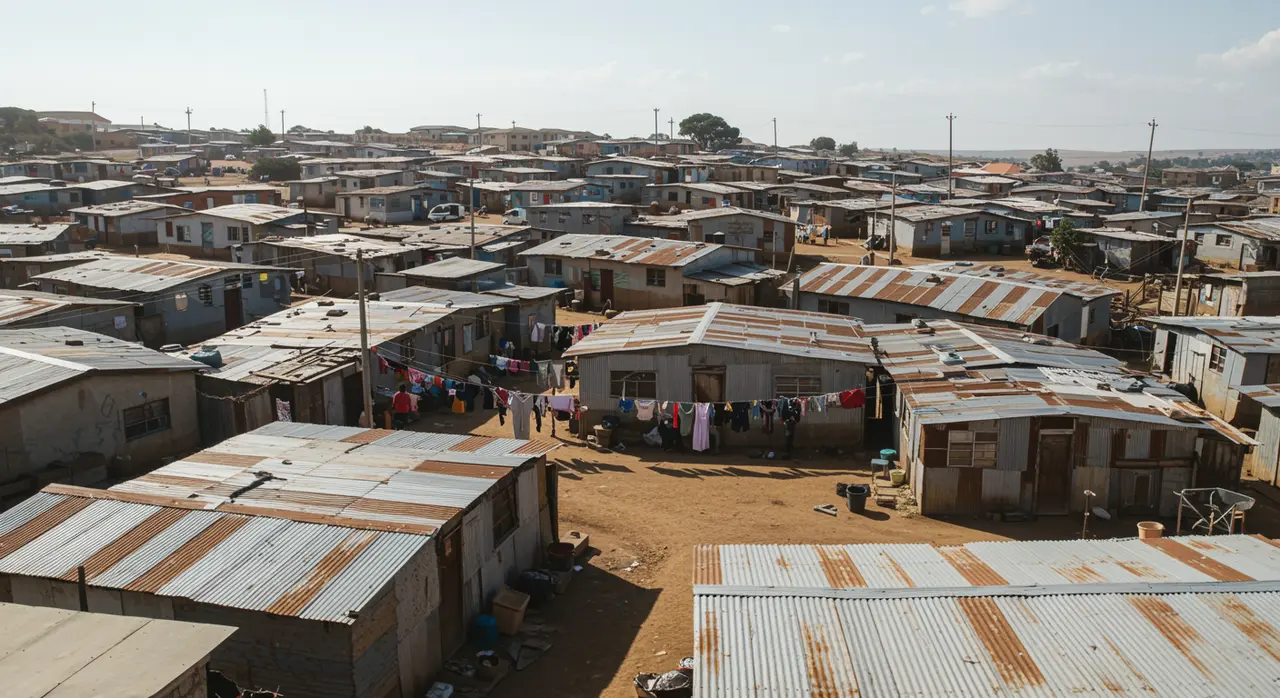Reflective Roof Paint Tested to Combat Extreme Heat in South Africas Informal Settlements
40 views
A Glimmer of Relief: Reflective Roof Paint Offers Hope in South Africa’s Sweltering Informal Settlements
In the sprawling townships of South Africa, where rows of makeshift homes stretch into the horizon, life under the relentless sun is more than a matter of discomfort—it’s a daily battle for survival. Constructed from corrugated metal and wood, these informal dwellings, often referred to as shacks, become veritable furnaces during the day, with indoor temperatures soaring to a suffocating 35°C. For the millions who call these settlements home, the heat is not just a seasonal inconvenience but a persistent adversary that erodes health, disrupts sleep, and chips away at productivity.
The situation is exacerbated by a grim reality: the ever-present specter of crime. In neighborhoods like Khayelitsha, one of Cape Town’s largest townships, leaving doors or windows ajar for a breath of cool air is an unthinkable risk. Yet, for many, the alternative—investing in air conditioning or even a modest electric fan—remains out of reach in a country where unemployment hovers stubbornly high, especially in marginalized communities. The result is a vicious cycle of sleepless nights and sluggish days, with residents grappling not only with the heat but also with its insidious long-term effects on their health.

Studies have drawn a direct line between poor sleep and a host of medical conditions, including high blood pressure, diabetes, and cardiovascular complications. For those in Khayelitsha who rise before dawn to catch overcrowded taxis to low-paying jobs, the toll is doubly harsh. Fatigue and reduced productivity ripple outward, affecting families and, by extension, entire communities. Yet, amid this bleak backdrop, a promising intervention is beginning to take root—one that could offer not only cooler homes but also a measure of dignity and reprieve.
In a joint effort by researchers in South Africa and Ghana, a simple yet innovative solution is being tested: reflective roof paint. Dubbed Rhinoluxe Heat Reflect, the paint is designed to reduce the amount of heat absorbed by the corrugated metal roofs that dominate these settlements. Preliminary trials suggest the paint can lower indoor temperatures by as much as 8°C, a potentially transformative change for residents who have endured years of stifling heat.
The initiative, part of the Heat Adaptation Benefits For Vulnerable Groups in Africa (HABVIA) study, is closely monitoring 120 homes across South Africa and Ghana that have been treated with the reflective coating. Researchers are not just measuring temperature changes but are also delving into the physiological impacts on the residents. Sleep quality, hydration levels, and blood pressure are among the key metrics being tracked, with the ultimate goal of understanding how a relatively low-cost intervention could ripple through various facets of life.
Early anecdotal feedback from residents has been encouraging. Some have reported more restful nights, a marked contrast to the oppressive heat that previously robbed them of sleep. Others have noted a subtle but significant improvement in their ability to focus and function during the day. While these initial observations are heartening, researchers caution that more comprehensive data is needed to fully assess the paint’s long-term efficacy.
The implications of this study extend far beyond the borders of South Africa. Globally, over a billion people live in informal settlements, many of which are vulnerable to extreme heat exacerbated by climate change. The reflective paint experiment, if proven successful, could offer a scalable and affordable solution for similar communities around the world. It is a rare example of a small intervention with the potential for outsized impact—a reminder that sometimes, the most effective solutions are also the simplest.
Yet, challenges remain. Even if the reflective paint proves to be a game-changer, scaling its use will require navigating logistical, financial, and political hurdles. For one, the cost of the paint, while modest compared to air conditioning, may still be prohibitive for many residents without external funding or subsidies. Additionally, the long-term durability of the coating in harsh conditions is yet to be determined.
Still, the project is a testament to the power of ingenuity in addressing systemic issues. In a world increasingly shaped by climate extremes, the ability to adapt is no longer a luxury but a necessity. For the residents of Khayelitsha and similar communities, the reflective paint represents not just a practical solution but also a glimmer of hope—a chance to reclaim a measure of comfort and health in environments that have long been defined by deprivation.
As the HABVIA study continues to unfold, the broader question of how societies can better support their most vulnerable members looms large. Solutions like Rhinoluxe Heat Reflect remind us that even in the face of daunting challenges, progress is possible. It may not come all at once, but it often begins with a single stroke of paint—bold, reflective, and full of promise.